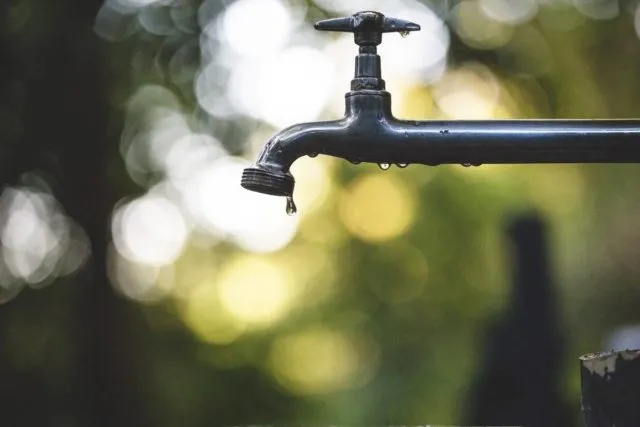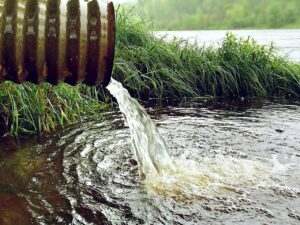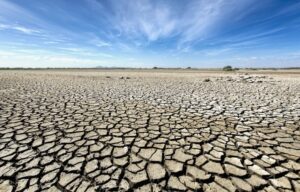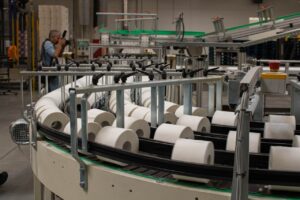Reducing Water Usage in Industry

In many first world countries, freshwater is seen as abundant and easily sourced and stored. In reality, only 3% of the world’s water is fresh and, with the majority of this freshwater being found in ice caps, glaciers, soil and the atmosphere, only 0.5% is readily available. In this article, we highlight the issues surrounding the overuse of this resource, specifically in industry and discuss the actions already being taken to minimise water use across a variety of business practices.
Why the need to reduce water use?
Many regions around the world are experiencing water scarcity, where the demand for water exceeds the available supply. Industrial processes often consume significant amounts of water, putting additional strain on already limited water resources. By reducing water usage, industries can contribute to water conservation efforts and ensure the availability of water for other essential needs, such as agriculture, drinking water, and ecosystems. Furthermore, industrial water use can have negative environmental impacts. Industries often discharge wastewater containing pollutants, chemicals, and other contaminants into rivers, lakes, or oceans. This can harm aquatic ecosystems, disrupt natural habitats, and degrade water quality. By reducing water usage, industries minimize the volume of wastewater generated, preserving the integrity of ecosystems.

Over time, it has been observed that water is closely tied to energy consumption in many industrial processes[1]. Pumping, treating, and heating water requires energy, often derived from fossil fuels, which contributes to greenhouse gas emissions and climate change. When they control their water usage, industries can indirectly reduce energy consumption and associated carbon emissions, promoting sustainability.
An added incentive for large corporations to limit their water use is the significant cost savings by lowering their water bills. Costs can be saved from minimising the costs associated with wastewater treatment and disposal, and potentially avoiding penalties for excessive water use. Implementing water-efficient technologies and practices can lead to long-term financial benefits for industries.
Who’s using the most and what is being done?
Several industries are known to be significant users of water and this can even influence whether or not the companies in these industries work in certain geographies.

The most obvious example of this is the farming industry where agricultural activities, including irrigation for crop production and livestock watering, account for the largest share of global water usage. Umida Ag are tackling this problem with their sub-surface irrigation system, Aquifer Pipe. This irrigation method uses buried pipe that can distribute water using gravity and reduces water loss by evaporation by 50%. It is estimated that 70% of the world’s freshwater is used for agricultural purposes and 1/3rd of this is used to grow animal feed for meat production. It takes 15,000 litres of water to produce 1kg of beef and 10,000 for the equivalent weight of lamb. Sheep are also used for their wool and along with other materials, textile manufacturing is another area where high levels of water use are beginning to be policed. Dyeing, printing, and finishing clothes all require water, with a pair of jeans requiring 7600 litres of water to produce and a T-shirt needing 2,700 litres[2,3]. To put that in perspective, humans drink around 1,200 litres of water a year. One company moving to reduce its water use in textiles is Revolution Fabrics, who use a water-free dyeing technique. They use a pigment, rather than a chemical dye and melt it to then apply to the fabric. The fabric itself is made from recyclable polypropylene to further improve sustainability.
Elsewhere, mining operations require significant water for various purposes, particularly in resource extraction industries like coal, metals, and minerals. Water is used for mineral processing, dust suppression, and equipment cooling, with 4 billion gallons of water being used in the US alone, according to a 2015 survey by the United States Geological Survey. Lilac Solutions realised that the lithium mining business’ use of evaporating ponds was not only environmentally damaging, but required large volumes of water. They developed a technology that removes the need for the ponds and uses ion exchange beads to absorb lithium out of brine.

Finally, the pulp and paper industry is a significant consumer of water due to its various manufacturing processes. Water is used in several stages throughout the production of pulp and paper, including pulp preparation, pulp washing, paper forming, and paper drying. On average, 7000 gallons of water are used to produce 1 tonne of paper and the wastewater can often contain chemical contaminants. Releaf Paper is trying to address the lack of sustainability in the paper industry and one way they do this is by using 15 times less water than traditional manufacturers. Furthermore, they use bio waste (fallen leaves) as a raw material and have 78% lower carbon dioxide emissions than other paper manufacturers.
Conclusion
It is currently envisaged that within the next decade, 700 million people will have to move geographies due to extreme drought and by 2040, one in four children will live in an area of extreme water scarcity. Responsible use of freshwater is a growing issue, due to the threat of climate change and a growing population. Almost all industries will need to strategise how they adapt from their current business practices of using water sparingly, to a system where water use is optimised and recycled properly.
How can Strategic Allies Help?
Strategic Allies works with multinational manufacturing companies, across all sectors, who are seeking differentiation through partners with innovative technologies & solutions for their products and services. If you’d like to find out more about how we can help you to explore and exploit new markets and/or offer opportunities to differentiate your offerings, please contact John Allies at john@strategicallies.co.uk
References
- https://ieaghg.org/ccs-resources/blog/new-ieaghg-report-understanding-the-cost-of-reducing-water-usage-in-coal-and-gas-fired-power-plants-with-ccs
- https://www.thehindubusinessline.com/blink/know/it-takes-7600-litres-of-water-to-make-your-jeans/article30871977.ece#:~:text=According%20to%20researchers%2C%20a%20pair,%2Dhave%20%E2%80%94%20with%20considerable%20concern
- https://www.triplepundit.com/story/2013/it-takes-2700-liters-water-make-t-shirt/54321